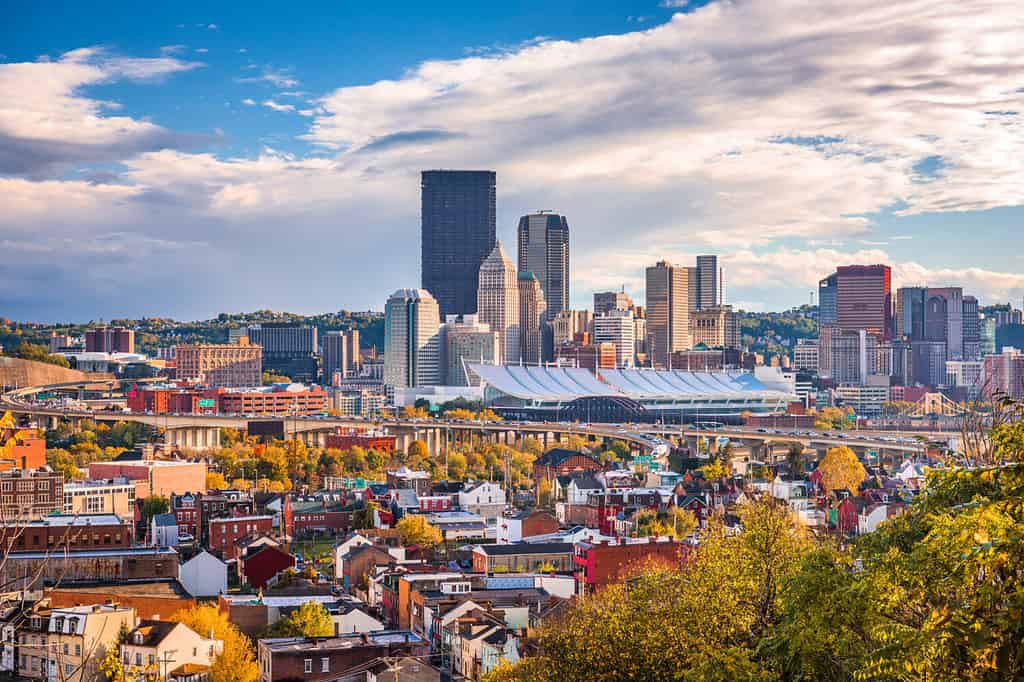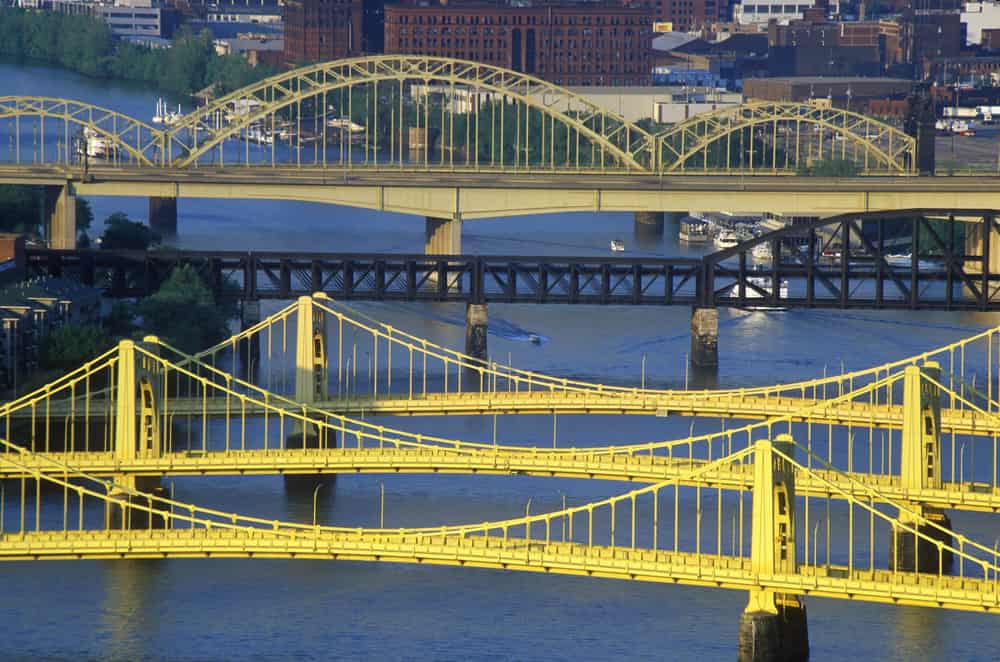In 1758, a man named John Forbes decided to name a section of land in Pennsylvania after his late friend, William Pitt. And, just like that, the city of Pittsburgh was born. Pittsburgh is the second-largest city in Pennsylvania (behind Philadelphia), yet it is discussed far less than its more populous counterpart. If there’s something that most people might recognize about the city, however, it’s probably in relation to its blue-collar past. In this article, we’ll be delving into why Pittsburgh is called the “Steel City.” And, perhaps more importantly, we’ll detail how this city recovered once its defining industry packed up and left.
Why Is Pittsburgh Known As The “Steel City”?

The geographical aspects of Pittsburgh, including its access to natural resources as well as its three rivers, made it an ideal place for steel production.
©Sean Pavone/Shutterstock.com
Pittsburgh is called the “Steel City” for one reason, and one reason alone: Its prominence in our nation is built on a foundation of steel. Pittsburgh was the driving city for steel, an industry that (in its heyday) was one of the most profitable in the nation. The first steel mills began popping up in the 1880s, and from then on, their presence in Pittsburgh began to grow.
Why exactly the steel industry chose Pittsburgh to centralize itself in can be pretty easily explained. You see, Pittsburgh (and most of the surrounding Pennsylvania area) was sitting on large coal deposits. This coal, of course, played a crucial role in steel manufacturing. Add to this the fact that the city has three easily navigated rivers attached to it on every side, and you have a winning combination for factories.
Then, industrial giants began to take notice of the fiscal opportunity. In particular, philanthropist Andrew Carnegie invested a generous amount of money into creating elaborate and sophisticated steel mills. This investment certainly proved itself fruitful, as pretty soon, the money began pouring in. By the 20th century, Pittsburgh was one of the most pivotal steel-making cities in the world.
The Role of Steel in The Pittsburgh Economy

When the steel industry left Pittsburgh, the economy became incredibly fragile.
©Mihai_Andritoiu/Shutterstock.com
As you can imagine, having such a thriving, profitable industry in a city will make it one of great economic opportunities. Blue and white-collar workers alike were finding seemingly endless amounts of job opportunities, and these jobs weren’t paying skimpily, either. This led to many migrating to Pittsburgh to get a piece of the action.
However, perhaps the greatest economic impact that the steel industry had on Pittsburgh happened not during its glory days, but rather once it had left. When steel left the “steel city,” the economy absolutely folded onto itself.
Though the first part of the 20th century was beyond promising, things took a turn in the 1970s. People began to discover, quickly, that more profitable steel manufacturing took place overseas. These foreign imports were far cheaper than domestic ones, and thus the industry grew to lack more and more demand. The government failed to provide the city with support, and many lost their jobs.
Pittsburgh’s Industry Today
This story has a happy ending, though. The steel industry might be nonexistent in the area now, but don’t let that fool you into thinking that Pittsburgh has become a ghost town. In fact, the contrary is true! When a door closes, a window opens, or so the saying goes. Pittsburgh is now one of the leading cities in the country for healthcare and technology, with growing opportunities each and every day for those wishing to work in these settings. Not to mention, Pittsburgh’s cultural and artistic scene is more vibrant than ever, giving all those who live there a sense of pride and community.
It might not be a steel-producing city anymore, but that doesn’t matter. Pittsburgh is the “Steel City” not just because of this piece of history. It is also because the bonds that the citizens have are comparable to that of the strong metal they once made.
Other Popular Pittsburgh Nicknames

One of Pittsburgh’s commonly referred nicknames is the “City of Bridges,” which makes sense when you consider that the city has 446 of them.
©Joseph Sohm/Shutterstock.com
While the “Steel City” might be the most popular moniker for Pittsburgh, this area actually goes by many nicknames. Some of them have more obvious explanations than others, but all are equally as compelling. Below are just a few of the city’s other popular nicknames:
- “City of Bridges”: The roadways in Pittsbrugh are, well, interesting to say the least. In order to combat the rolling hills of the area, there was some innovation that needed to be implemented. This solution came in the form of bridges! A lot of bridges. 446, to be exact. This is so many that it even beats out Venice, Italy, a place well-known for its abundance of bridges.
- “City of Champions”: You might scoff at this nickname, as it is a bit self-gratifying, but the truth is that Pittsburgh has certainly earned its title as the “City of Champions”. With six Super Bowl titles, five Stanley Cups, and five World Series wins, the city’s arsenal of sports teams is not one to be trifled with.
- “Iron City”: Before the “Steel City” title, Pittsburgh had a brief stint as the “Iron City.” Though the nickname itself hasn’t stuck around, it is now the name of one of the city’s most popular beers, crafted locally at the Pittsburgh Brewing Company.
- “412”: The last of Pittsburgh’s nicknames is quite straightforward. The “412” is how many refer to the city, and the explanation is simple: That’s Pittsburgh’s area code. Now things are a bit murky, as the “724” area code has been thrown into the mix, but it doesn’t have quite the same ring to it.
Thank you for reading! Have some feedback for us? Contact the AZ Animals editorial team.








